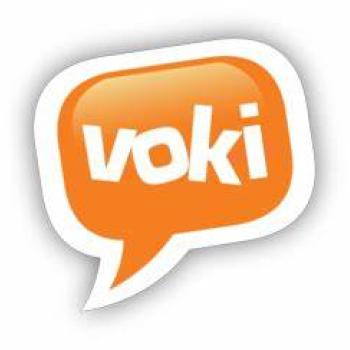Speak to Me: Teaching with Voki

About this Strategy Guide
Through Voki, a Web 2.0 tool, students create customizable avatars for class presentations for various purposes, such as presenting biographical information, expressing an opinion, or reading a poem.
Research Basis
The NCTE Definition of 21st Century Literacies states that technology has enlarged the meaning of literacies. To be considered a literate person in the twenty-first century one must possess a variety of skills and competencies. To reach this goal, “readers and writers need to develop proficiency with the tools of technology.” Therefore, exposing students to online web applications such as Voki is invaluable in developing the new literacies. Furthermore, as Sullivan points out, we are no longer living in a world where we go to the Internet for information, but instead we go to the web to participate in the creation of information. He insists that developing pedagogy that includes teaching students to use technology effectively to communicate is an important role for educators. In addition, Kist notes that teachers who attempt to transform their classroom with technology find their students are more engaged in learning.
Kist, W. (2012). “Middle Schools and New Literacies: Looking Back and Moving Forward.” Voices from the Middle, 19 (4), pp. 17-21.
Sullivan, S. (2010). “Introduction: What’s on the Other Side When You Finally Cross the Digital Divide.” Lesson Plans for Developing Digital Literacies. M. T. Christel and S. Sullivan (Ed.). Urbana, IL: National Council of Teachers of English.
Strategy in Practice
- Examine the existing curriculum to decide where the use of Voki best fits. Below are some ideas for implementing this tool:
- Students create avatars to read their short poetry.
- After researching famous people, students could create avatars that resemble these famous people to present information, such as why they were important in history.
- At the beginning of the school year, students could create avatars to resemble themselves as an introduction to the class.
- Students could use Voki avatars to persuade the audience to act, such purchasing a product or voting for a candidate.
- Familiarize yourself with Voki before introducing it to your students. Click on “Create” on the Voki homepage to find the steps for creating a Voki.
- Create a step-by-step tutorial for your students or use one such as How to Make a Voki.
- Sign up for a paid subscription to Voki Classroom, which will provide seventy-five ad-free student accounts with the option to purchase more as well as access to tutorials. You will be able to group the students into classes, post assignments, and review Voki avatars before they go public.
- Click on Add Students under the Student tab to create student accounts. You can type each name separately or use the Import a List option.
- Print the students’ account information—both a master list for yourself and individual instructions for the students to be distributed later.
- If you are working with more than one class, use the Class tab to add classes. Click on the icon of two people to assign students to classes.
- Click on the + icon to create an assignment. Click on the hammer and wrench icon to further configure the assignment to show the due dates and to allow students to turn in their scripts through Voki.
- Determine if students will use the type to text option or record their own voices. Check for working recording equipment if that is chosen.
- Create a sample Voki that serves the same purpose as your students’ Vokis. For example, this sample features Barack Obama persuading people to vote for him.
- After students view the sample, discuss the necessity of a script and assign one for the students to do.
- Model for the students how to login to their accounts and how to create a Voki. Model how to choose an appropriate avatar to suit the purpose, how to modify that avatar’s appearance, and how to upload a background. Refer the students to the print out Voki Instructions for support in creating, too.
- Develop a rubric for evaluating the assignment, such as the Voki Dialect Rubric.
- Allow time for students to evaluate a partner’s Voki before the entire class views the creations. Additionally, allow students to revise after this evaluation.
- Allow time for students to share their creations with the class.
- Establish a class wiki--at Wikispaces, for example--where you can link the students’ Voki avatars so that all in the learning community can view the students’ projects.
NOTE: Some schools filter Voki, so speak with your technology coordinator ahead of time for approval.
